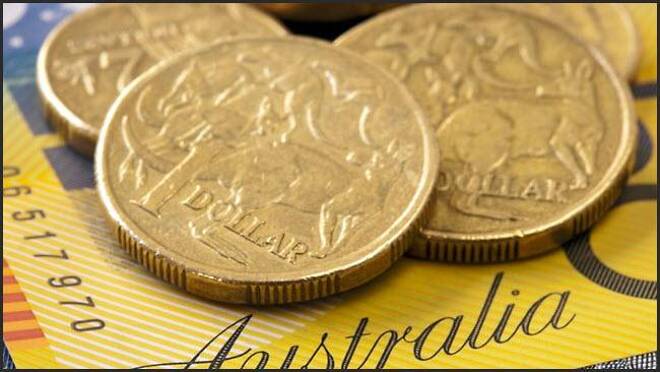Advertisement
Advertisement
Asian Data Keeps Traders Active
By:
The Australian dollar came to life this morning after better than expected employment data. The Aussie gained 83 points to trade at 0.7146 well below the
In this article:
Across the Tasmanian sea the kiwi drifted down 7 points on lackluster manufacturing data. Losses were limited as the US dollar weakened. New Zealand manufacturing activity weakened in October to the lowest level in five months in what may be a temporary blip. The BNZ-BusinessNZ performance of manufacturing index fell to a seasonally adjusted 53.3 last month, from 55 in September, marking the lowest level since May. A reading of 50 separates expansion from contraction. The kiwi is trading at the bottom of its range at 0.6552.
Remaining in Asian the Japanese yen weakened on mixed comments from the Bank of Japan. Against the US dollar the yen is trading at 122.87 and against the euro at 132.25. While almost half of economists expected the BoJ to cut its inflation target last month, and then respond with renewed stimulus efforts, Mr Harada downplayed the need to hit the BoJ’s 2 per cent inflation target right away:
Prices have not risen as much as initially had been expected, but I think that QQE would be criticized as a serious failure if prices rose without employment growth. Prices eventually will start rising as the output gap in the overall economy tightens. We will be able to confirm by the end of fiscal 2015 that the year-on-year rate of increase in the CPI is accelerating toward 2 percent. r. Kuroda also said he expects inflation to move toward 2% once the impact of lower oil prices begin to taper off.
His comments didn’t provide fresh cues for market participants, many of whom were surprised that the central bank didn’t ease policy further last month. At its Oct. 30 policy meeting, the BOJ left its stimulus program unchanged even as it downgraded its growth and inflation projections. The BOJ’s policy board is slated to meet on Nov. 18-19. The dollar eased as investors took advantage of the thin holiday trading session to book profits for the currency’s recent gains. The dollar has risen sharply of late in anticipation of a Federal Reserve interest rate increase in December, a belief fortified by last week’s unexpectedly strong data on U.S. employment. Over the last week, the dollar index has gained about 3 percent.
On Tuesday, the dollar hit a fresh 6-1/2-month high against the euro and a seven-month peak against the Swiss franc, besting highs touched after the release of Friday’s surprisingly robust U.S. non-farm payrolls report.
About the Author
Barry Normanauthor
Did you find this article useful?
Latest news and analysis
Advertisement
